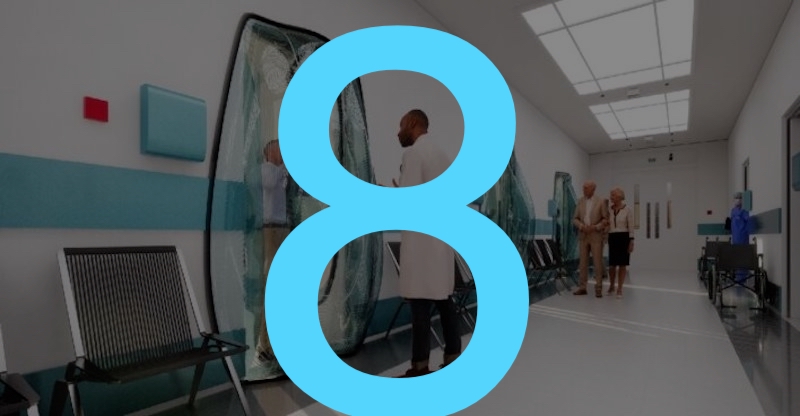1. WATG designs solution for isolating without sacrificing social connectivity (BD+C)
"But in an effort to make the transition to isolation easier, without the need to sacrifice human interaction, WATG has created Oriel, a new option that allows any room to become a self-isolation zone while maintaining a social component."
2. State lawmakers encouraging transition to heat pumps for building heating (BD+C)
"Lawmakers and regulators in an increasing number of states, including California and New York, are changing policies to promote the use of electricity instead of fossil fuels to power building heating and hot water systems."
3. National survey reveals pandemic's impact on college students' mental health, remote learning, families' income and more (Core Spaces)
"Of 2,500 student respondents, 75% feel more anxious or stressed, 57% said they lost their summer jobs and 90% want to return to campus in the fall."
4. A look back at design standard shifts: ADA vs. COVID-19 (Burns & McDonnel)
"If the ADA is any guidance, it may be years before nationwide standards are published and adopted."
5. Clothing stores, not bars and restaurants, took the biggest sales hit from the Coronavirus (MarketWatch)
“It turns out that bars and restaurants did not take the biggest hit from the coronavirus pandemic — it was clothing stores that suffered the biggest revenue losses over the past three months, with sales slashed by 66.6%. By contrast, sales at restaurants and bars were down “only” 40%."
6. Hotels see leisure travel return, but it's still going to be a tough year (Bisnow)
"Leisure travelers are slowly returning to the hotel market even though the lodging industry as a whole faces ongoing financial strain from the coronavirus pandemic and a longer road to full recovery, industry experts say."
7. Will contactless technology be a priority for post-COVID-19 workplace? (Mortgage Professional America)
"The workplace is being reimagined to include more square footage per person, plexiglass dividers, and hybrid work from home and office structures and schedules, in order to conform to new health and safety regulations. But what role will technology play, as companies look to reduce contamination on high touch surfaces?”
8. Once booming San Francisco apartment market goes in reverse (WSJ)
“Rents in San Francisco, the most expensive apartment market in the U.S., are tumbling as the city’s vaunted tech sector sheds jobs and more tenants leave the city.”

Related Stories
Hotel Facilities | Sep 6, 2017
Marriott has the largest construction pipeline of any franchise company in the U.S.
Marriott has the most rooms currently under construction with 482 Projects/67,434 Rooms.
Market Data | Sep 5, 2017
Nonresidential construction declines again, public and private sector down in July
Weakness in spending was widespread.
Market Data | Aug 29, 2017
Hidden opportunities emerge from construction industry challenges
JLL’s latest construction report shows stability ahead with tech and innovation leading the way.
Market Data | Aug 28, 2017
U.S. hotel construction pipeline is up 7% year-over-year
For the economy, the rate of growth may be low but it’s running on all cylinders.
Market Data | Aug 23, 2017
Architecture Billings Index growth moderates
“The July figures show the continuation of healthy trends in the construction sector of our economy,” said AIA Chief Economist, Kermit Baker.
Architects | Aug 21, 2017
AIA: Architectural salaries exceed gains in the broader economy
AIA’s latest compensation report finds average compensation for staff positions up 2.8% from early 2015.
Market Data | Aug 20, 2017
Some suburban office markets are holding their own against corporate exodus to cities
An analysis of mortgage-backed loans suggests that demand remains relatively steady.
Market Data | Aug 17, 2017
Marcum Commercial Construction Index reports second quarter spending increase in commercial and office construction
Spending in all 12 of the remaining nonresidential construction subsectors retreated on both an annualized and monthly basis.
Industry Research | Aug 11, 2017
NCARB releases latest data on architectural education, licensure, and diversity
On average, becoming an architect takes 12.5 years—from the time a student enrolls in school to the moment they receive a license.
Market Data | Aug 4, 2017
U.S. grand total construction starts growth projection revised slightly downward
ConstructConnect’s quarterly report shows courthouses and sports stadiums to end 2017 with a flourish.
















